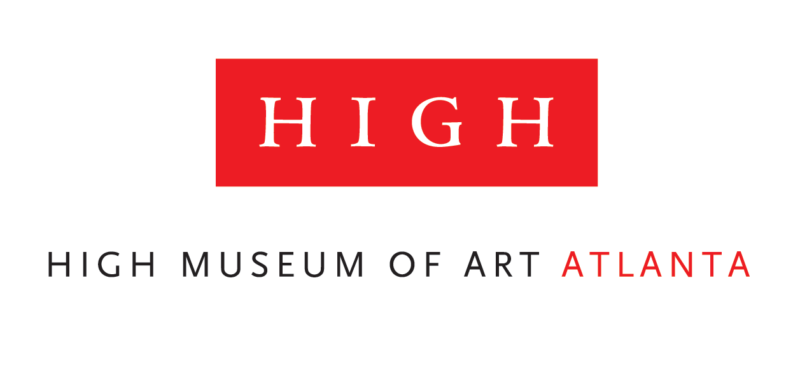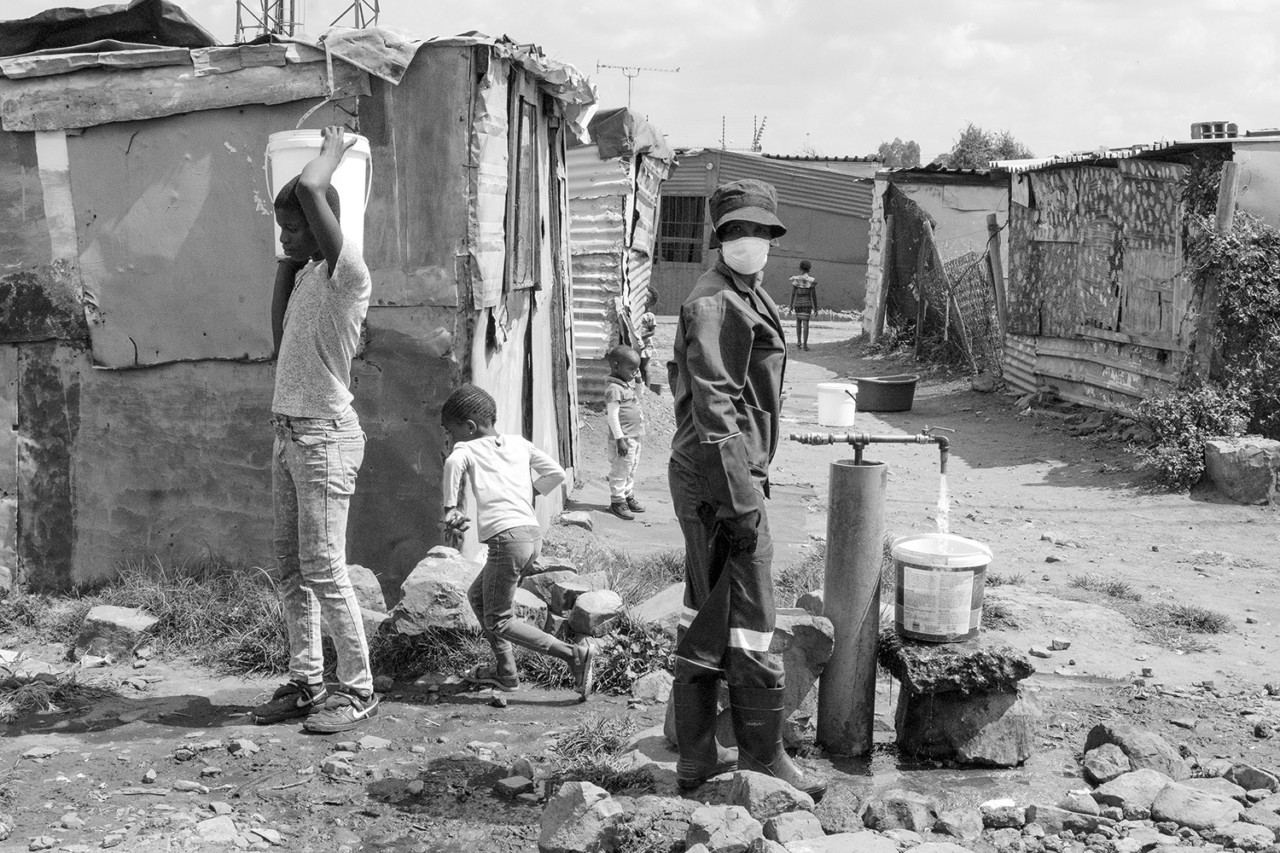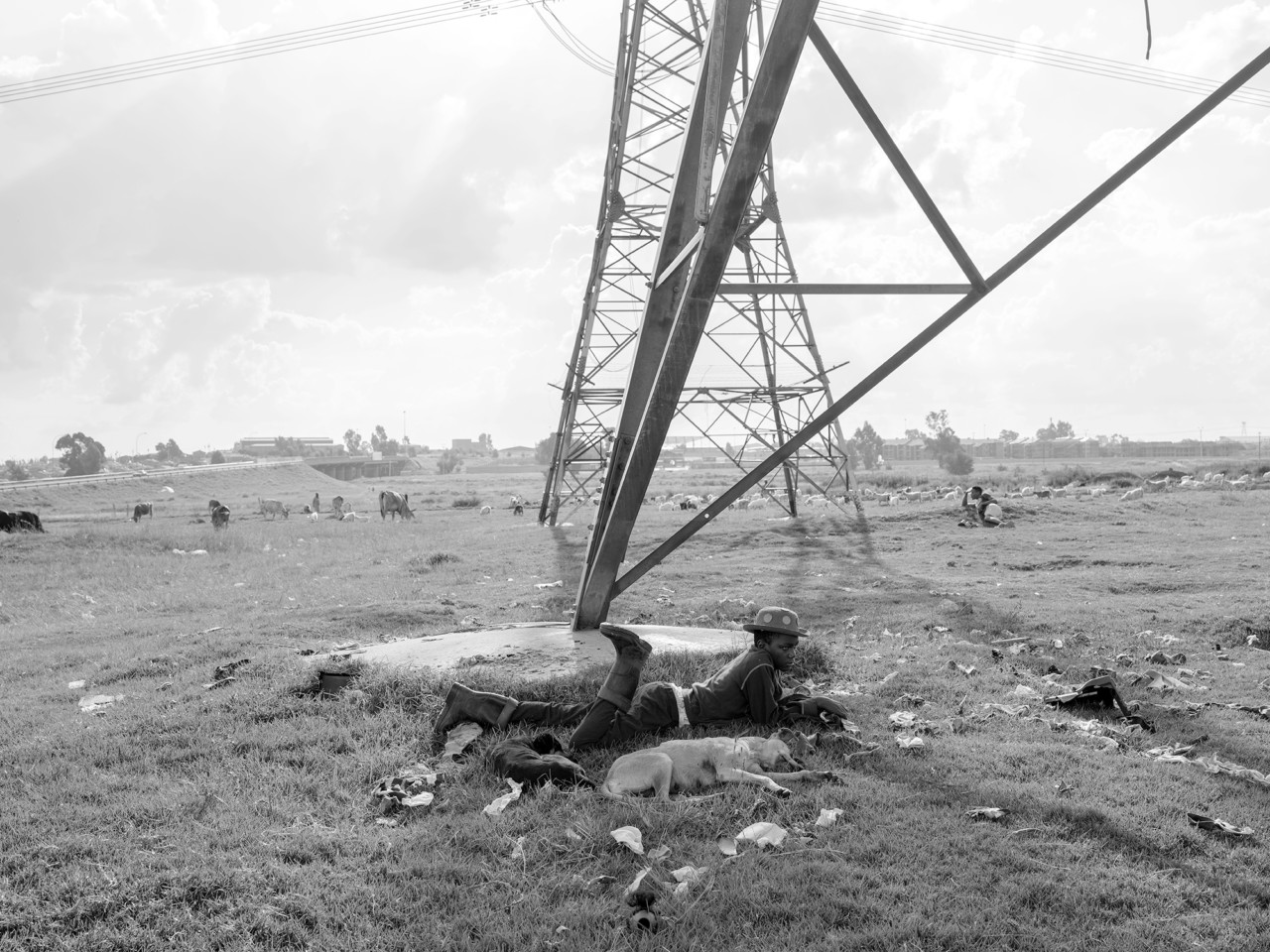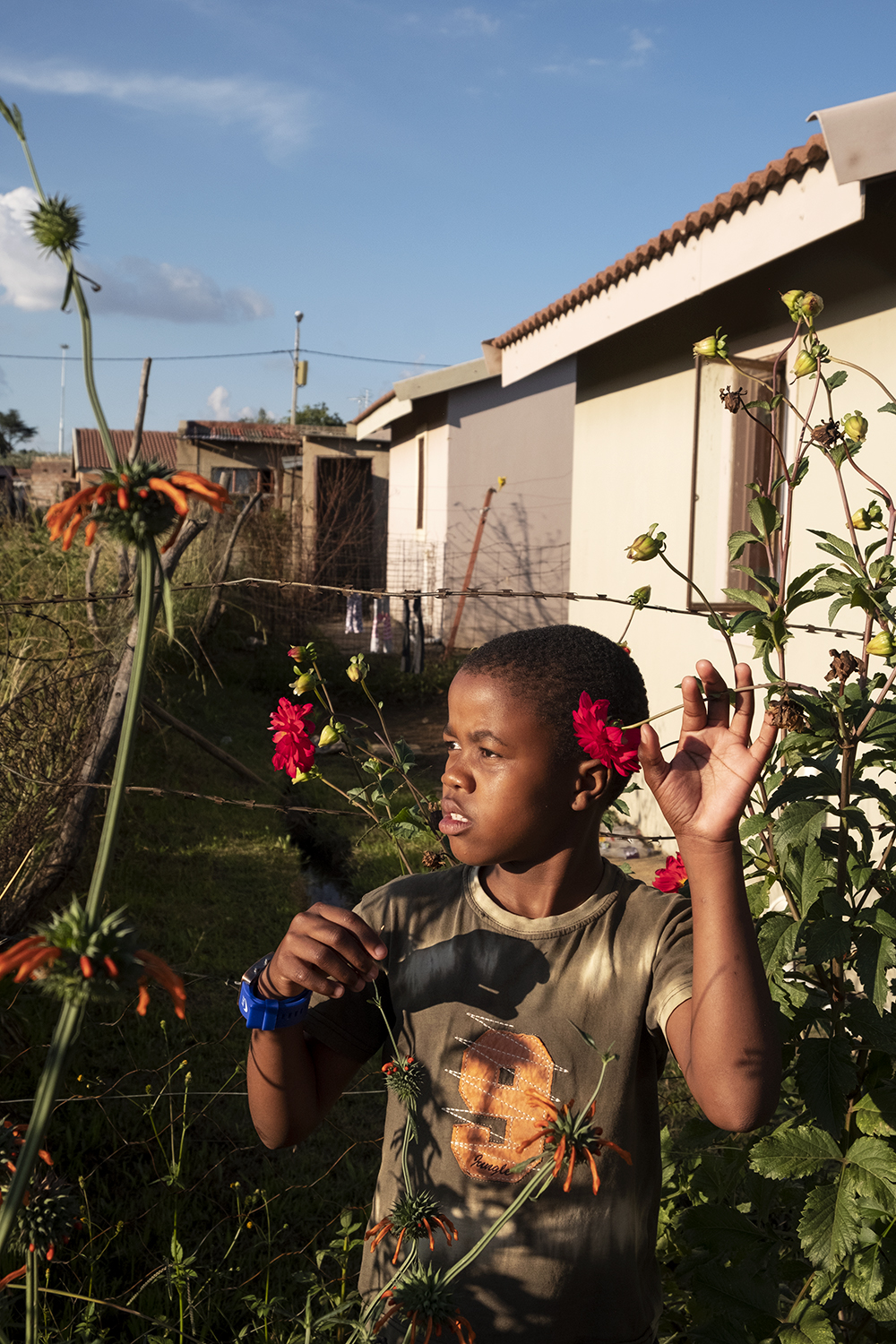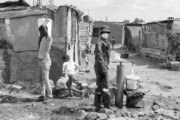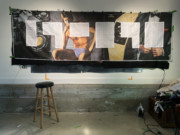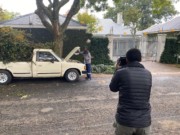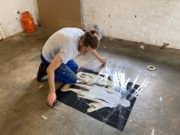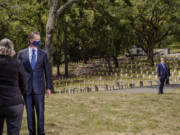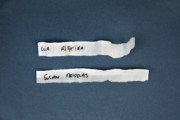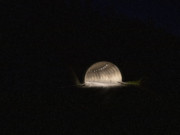“Life Has Changed Here Because of Corona. I Am Trying to Document That”
Lindokuhle Sobekwa shows us how his community in Thokoza, South Africa, is navigating a pandemic exacerbated by inequality
Magnum Live Labs offer a space for experimentation, making visible the collaborative process of creating new work. Participating photographers, working alongside a local curator, are challenged to respond to the location of each lab, making, editing and exhibiting new works together.
This year’s partnership with The High Museum of Art and The Hagan Family Foundation in Atlanta, was to be the first Lab hosted in an institutional space. Mikhael Subotzky, Carolyn Drake and Lindokuhle Sobekwa’s work represents the most diverse group of practices from Magnum to date, encompassing mixed media arts alongside photography. With the physical residency halted by COVID-19, the creative thinking went on.
This piece is part of a series of posts co-published with The High Museum of Art in Atlanta. Read an introduction by the museum’s Associate Curator of Photography, Gregory Harris, to the Magnum Live Lab program, here. Read the first of the interviews with the three photographers in the series, a Q&A with Carolyn Drake, here. In this interview, Gregory Harris and Eva Berlin, Digital Content Specialist, High Museum of Art, speak with Lindokuhle Sobekwa about photographing local communities in Thokoza, South Africa.
On June 18 Harris and the photographers will hold a live conversation on Zoom at 12 noon.
Our second Q&A session is with Lindokuhle Sobekwa, a documentary photographer working out of Johannesburg, South Africa. Lindo’s work often showcases social issues that impact his local community, such as poverty, violence, and addiction.
What was your perception of Atlanta as you were preparing for the Live Lab?
My perception about Atlanta was that it wasn’t that different from Johannesburg. Based on the information I searched for, I made a lot of comparisons related to issues of race, class, and politics — and how history influenced the contemporary landscape of Atlanta and how youth define themselves within it.
What were you originally planning to work on during the residency? How did you select the focus of your work during Live Lab?
I was interested in the contemporary landscape of Atlanta and how the youth define themselves within those spaces and revisiting the historical places that inform the current landscape of Atlanta. With the help of the High’s curator, Gregory Harris, we had already selected subjects in advance with whom I was going to collaborate in making the work.
You were in the US for several days before the country went into quarantine and you returned home to Johannesburg. What did you do during those few days in the US? How were the initial days of the outbreak treated differently in South Africa versus in the US?
I was selected by Mark Sealy, a British curator, to participate in the Houston FotoFest Biennale as part of a curated exhibition titled African Cosmologies. I was in Houston for a week and spent most of my time in meetings and portfolio reviews. In the U.S. during the early stages of the outbreak, life was still continuing as normal, but people were already practicing social distancing, and one could sense a bit of anxiety and the strangeness of not doing what you are used to, like shaking hands and hugging.
Meanwhile in South Africa, there were no announcements made, but people were aware of what the pandemic was doing to other parts of the world. It was only when I returned home that the government announced a lockdown and instructed us on the rules that needed to be adhered to.
When you returned home, you and Mikhael went into quarantine in his home. What was that experience like? Did you continue to work? What kind of conversations were you having?
The reason I had to go and quarantine at Mikhael’s place is because back home there wasn’t enough space for me to self-isolate for two weeks. Mikhael was kind enough to offer me a place to quarantine.
I was there physically, but truly my mind was back at home, constantly thinking about my family and if they were safe. I spent most of my time taking walks around the neighbourhood. This would distract me from constantly worrying about my family. I would always have my camera with me, looking at how people were responding to this pandemic and how it was affecting them.
Mikhael and I spoke mostly about the well-being of our loved ones and the inequality that exists in South Africa in terms of race, class, and politics. We also spoke about photography and ideas that we had for the Live Lab project.
Amid quarantine, how have you adjusted the work you’re doing? Upon returning home, did you carry through with any of your initial plans for the Live Lab? You often photograph your family. Have you been making pictures of them through the lockdown?
Upon my return home, my family had to separate in order to social distance. I had to go stay with my girlfriend at her house, my mom had to go stay in another township called Tsakane with my two nephews, and my brother remained in our home with my two sisters.
I did not continue with my initial plan. I changed it and looked at how the pandemic is affecting my community and my family. I have been working mostly in the townships that are near me and the one that my mother is currently in. I have taken a couple of shots of my mother and other people from my community.
So much of your work addresses issues of racial and class disparity in South Africa. How has the pandemic impacted these social divides, and how have you been recording those changes?
The main important rule of this pandemic requires people to socially distance and keep good hygiene. In the township, this is a very challenging thing. There is limited space for movement. The shacks are crowded, and it is not uncommon to find a family of ten living in one small shack. People have found it very difficult to be all locked up in one shack, so most of the time they are outside and not in their homes.
Lockdown has been a very difficult process for many of the families in my community, both for those who are unemployed and also those who are employed, because when the lockdown was extended from the initial three weeks, some people got letters of retrenchment. The people who hustle by selling in the streets have had to stop because of COVID-19 restrictions. I have been recording daily life: how people are dealing with the difficulties and anxiety that is brought by the pandemic.
The Live Lab was conceived to open up an artist’s creative process to a general audience. What do you hope people will take away from seeing how you work as an artist and how you’ve adapted your process to the new situation created by the coronavirus?
The Live Lab was going to be a learning process for me because I mostly work alone. It was going to be interesting to engage with an audience that could teach me about the place I’m photographing, a place that is foreign to me. I was also looking forward to learning from the two colleagues I was going to work with on this project.
In this new context, in the work I’m doing now on the coronavirus pandemic, I want people to see the sensitivity, caring, and dedication I bring to my work, as well as the collaboration that happens between me and the people I photograph.
I am documenting my community, but I am trying to bring the spirit of collaboration and to look at the place in a new way.
Life has changed here because of corona. I am trying to document that.
Editor’s Note: This interview was conducted before the movement for racial justice sparked by the murder of George Floyd began and therefore does not directly address these recent events.
The Live Lab Photography Residency and Exhibition are organized by the High Museum of Art, Atlanta, and Magnum Photos. This project is funded by the Hagan Foundations.
